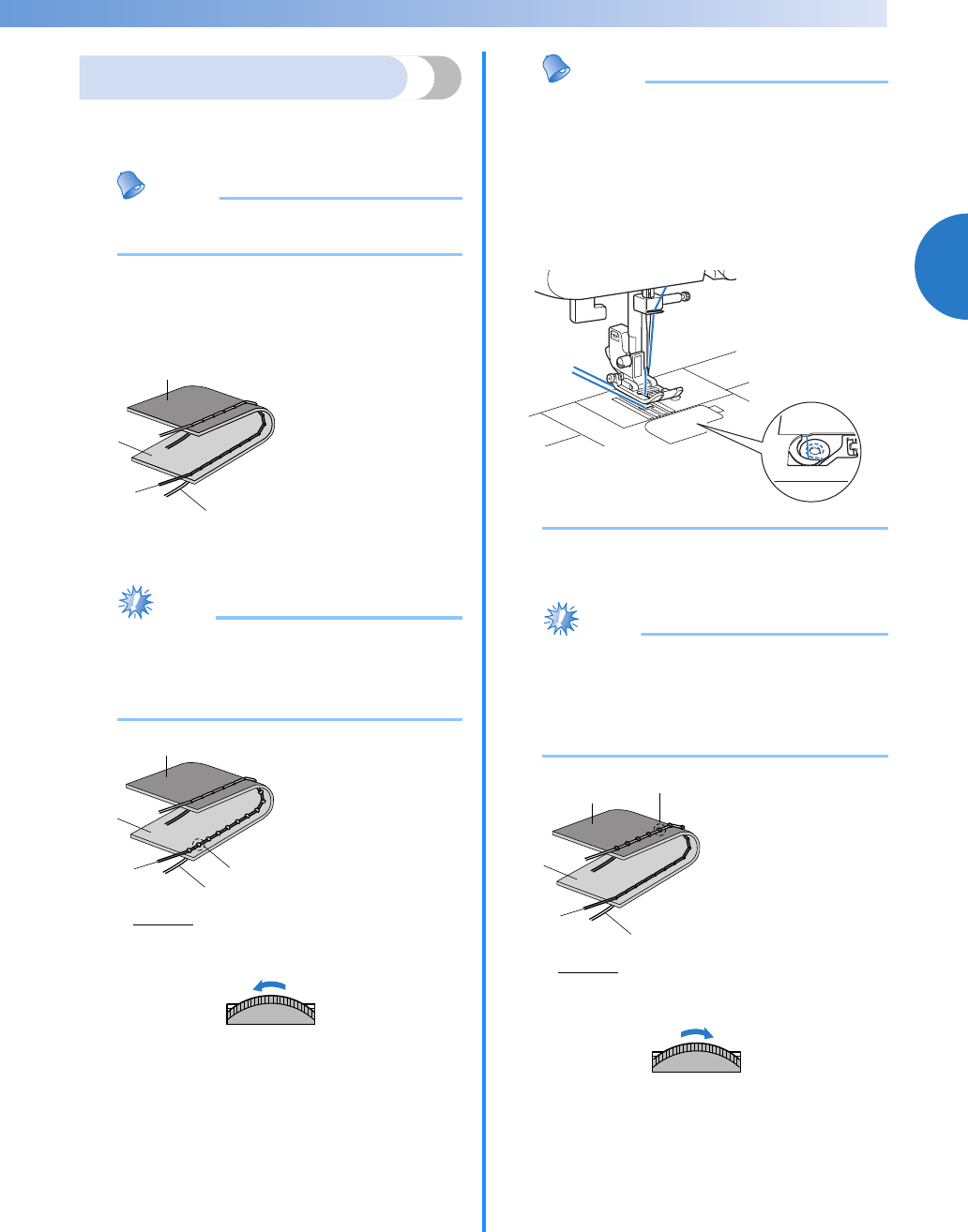
41
2
——
—————————————————————————————————————————————————————————————————————————————————————————————————————————————————————
Thread tension
The thread tension will affect the quality of your
stitches. You may need to adjust it when you change
fabric or thread.
Memo
● We recommend that you do a test sample
on scrap of a fabric before you start to sew.
■ Correct tension
Correct tension is important as too much or too
little tension will weaken your seams or cause
puckers on your fabric.
■ Upper tension is too tight
Loops will appear on the surface of the fabric.
Note
● If the bobbin thread was incorrectly
threaded, the upper thread may be too tight.
In this case, refer to
“Lower threading”
(page 19)
and rethread the bobbin thread.
Solution
Reduce the tension by turning the upper
tension-control dial to a lower number.
Memo
● When you finish sewing, remove the
bobbin cover and then make sure that the
thread is shown as below. If the thread is
not shown as below, the thread is not
inserted through the tension-adjusting
spring of the bobbin case correctly. Reinsert
the thread correctly. For details, refer to
page 19, 20.
■ Upper tension is too loose
Loops appear on the wrong side of the fabric.
Note
● If the upper thread was incorrectly
threaded, the upper thread may be too
loose. In this case, refer to
“Upper
threading” (page 22)
and rethread the upper
thread.
Solution
Increase the tension by turning the upper
tension-control dial to a higher number.
1
2
3
4
a Wrong side
b Surface
c Upper thread
d Lower thread
1
2
3
4
5
a Wrong side
b Surface
c Upper thread
d Lower thread
e Loops appear on
surface of fabric
4
3
5
1
2
3
4
5
a Wrong side
b Surface
c Upper thread
d Lower thread
e Loops appear on
wrong side of
fabric
4
3
5


















